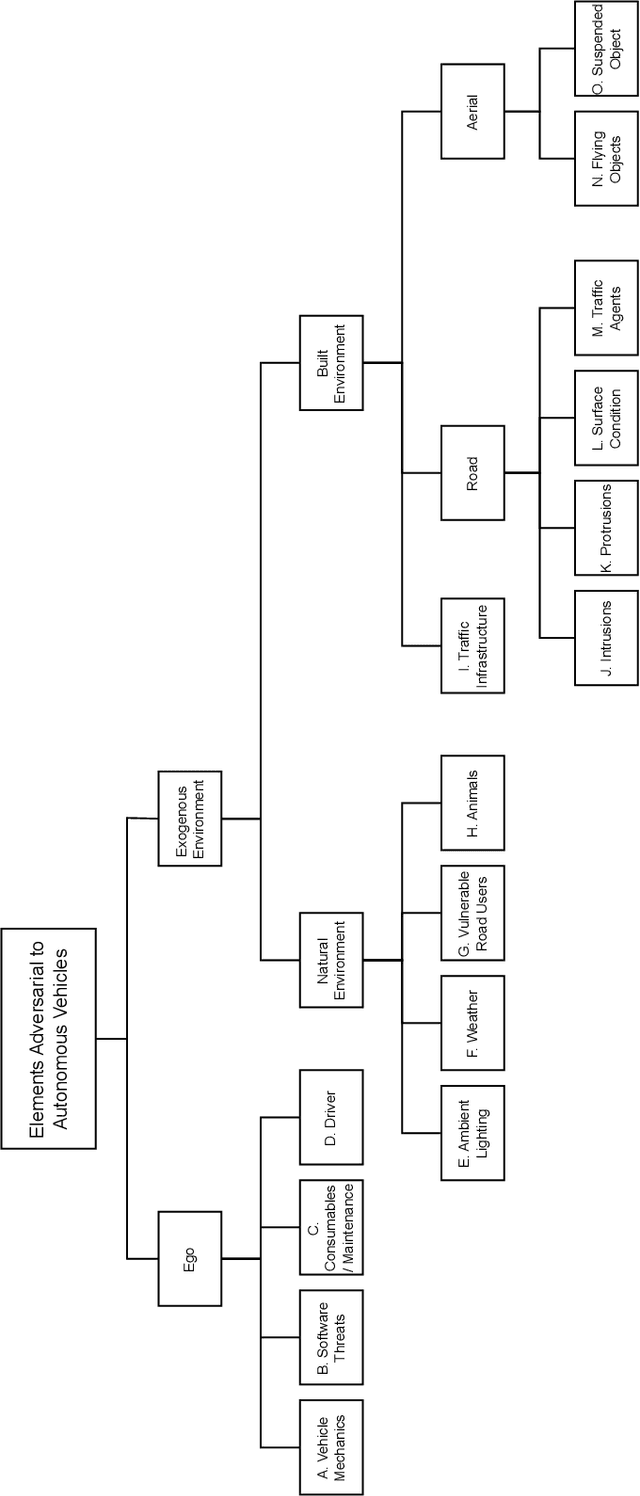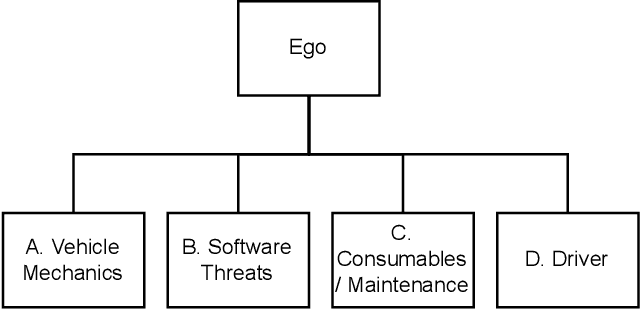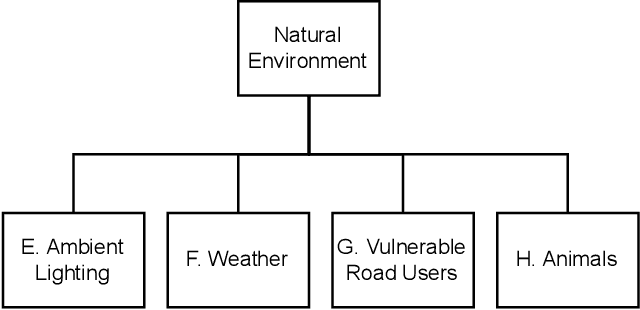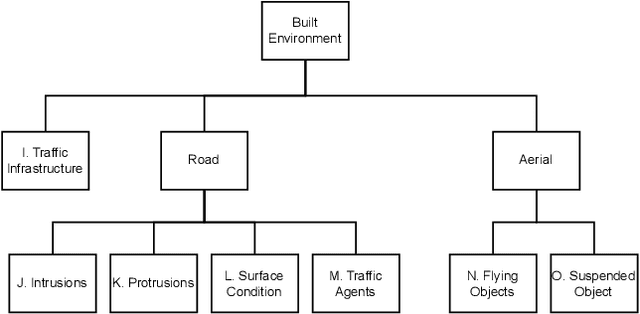Developing a Taxonomy of Elements Adversarial to Autonomous Vehicles
Paper and Code
Feb 29, 2024



As highly automated vehicles reach higher deployment rates, they find themselves in increasingly dangerous situations. Knowing that the consequence of a crash is significant for the health of occupants, bystanders, and properties, as well as to the viability of autonomy and adjacent businesses, we must search for more efficacious ways to comprehensively and reliably train autonomous vehicles to better navigate the complex scenarios with which they struggle. We therefore introduce a taxonomy of potentially adversarial elements that may contribute to poor performance or system failures as a means of identifying and elucidating lesser-seen risks. This taxonomy may be used to characterize failures of automation, as well as to support simulation and real-world training efforts by providing a more comprehensive classification system for events resulting in disengagement, collision, or other negative consequences. This taxonomy is created from and tested against real collision events to ensure comprehensive coverage with minimal class overlap and few omissions. It is intended to be used both for the identification of harm-contributing adversarial events and in the generation thereof (to create extreme edge- and corner-case scenarios) in training procedures.
 Add to Chrome
Add to Chrome Add to Firefox
Add to Firefox Add to Edge
Add to Edge